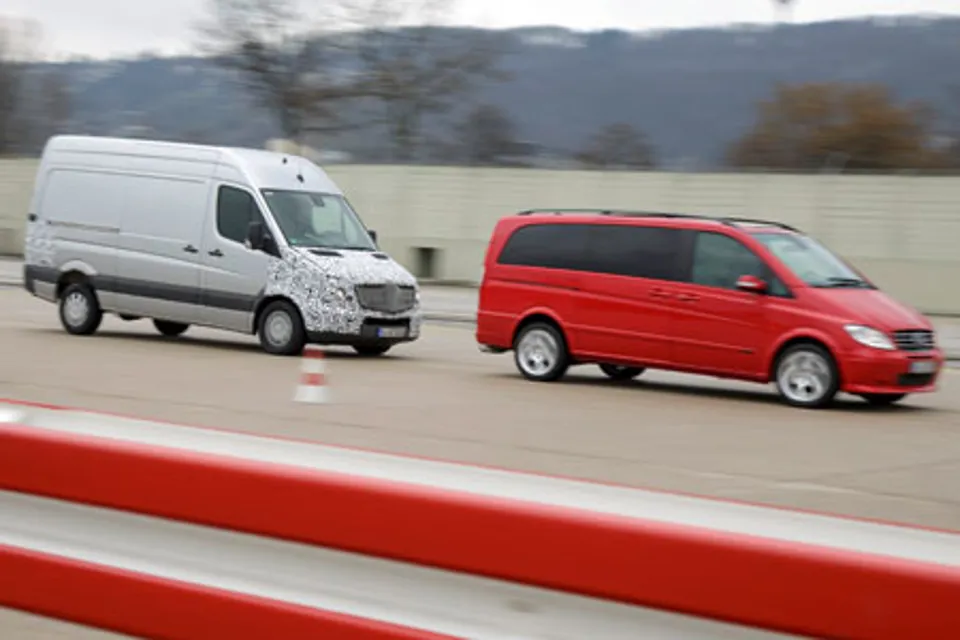Mercedes-Benz has always had a good reputation for safety in the commercial vehicle market.
It was the first to fit a brake booster to a van in 1962; disc brakes and ABS as standard in 1995; ESP in 2002; and Adaptive ESP in 2006.
As a result, Mercedes-Benz has calculated that the number of single-vehicle accidents involving its vans fitted with this technology has fallen by 64% since 1999, with the biggest drop – 39% – due to the introduction of ESP in 2002.
So when Mercedes-Benz invited Fleet Van to Germany to sample five new safety features on a series of prototype Sprinters we jumped at the chance.
Dr Sascha Paasche, head of product engineering Mercedes-Benz Vans, was bullish, saying “we now have control of the physics” before explaining that engineering safety systems into a van is more complex than just grafting on existing passenger car technology; their shape is different, their weight and centre of gravity changes when a load is added and, if the manufacturer is supplying a bare chassis, there is no way of knowing what the final body shape, weight, and use will be.
While the vast majority of those who operate commercial vehicle fleets understand and fulfil (and often exceed) their obligations to their employees, others are more reticent; the cost of the extra safety equipment is rarely offset by increased resale value when the vehicle is sold.
Aside from the fact that some of the technology we are examining will be fitted as standard to the new Sprinter range due out later this year, the most compelling argument (other than the moral dimension of keeping employees safe) came from Volker Mornhinweg, head of Mercedes-Benz Vans.
He argues that: “time is money”. If a van is off the road being repaired, it isn’t earning money.
Crosswind Assist
The most impressive technology at the Mercedes-Benz TecForum was, without doubt, the world premiere of Crosswind Assist.
A boxy shape, which is, by definition, what a van presents, is vulnerable to the effects of crosswinds, with even moderate gusts capable of blowing them into an adjacent lane before the driver can react.
Mercedes-Benz has developed Crosswind Assist, a deceptively simple system that utilises Adaptive ESP to apply a braking force to a wheel or wheels on the side the wind is coming from; the result is a much smaller deflection, “centimetres rather than metres”.
Using sensors to measure the Sprinter’s yaw rate, lateral acceleration, steering angle, wheel and engine speed, and payload the ECU calculates which wheel or wheels needs to be braked, and by how much and for how long.

















Login to comment
Comments
No comments have been made yet.